Revology’s classic Mustang has young blood but old soul
I’m behind the wheel of what I consider to be perhaps the most beautiful Ford Mustang ever built, a Bullitt-esque Highland Green 1968. This one packs 710 horsepower under the hood and bites the pavement with Michelin radials mounted on gray Torq Thrust wheels. If I were to be chasing a Dodge Charger, all raised intersections would look like jumps.
Unfortunately, we’re in Orlando, where intersections are mostly flat and thus do not resemble those in San Francisco. There’s no vintage Charger in sight. And we can’t officially call this car a “Bullitt” Mustang, since Tom Scarpello, founder and CEO of Revology Cars, doesn’t have the rights to that name. We’ll just refer to it the way they do in the Revology factory: the Option B build.
There’s no point in asking Scarpello what car his buyers cross-shop the Revology Ford Mustangs with, because the answer is, not much. “Maybe a Porsche 911 GT3 RS,” he says. “And you couldn’t find two more different cars.”
His customers are mostly people who can buy what they want, so even at $300,000, they aren’t giving up much to buy one of Scarpello’s cars.
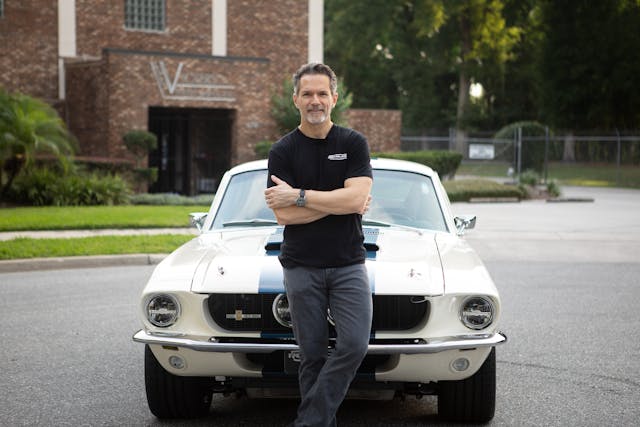
Of course, such automotive enthusiasts may number in the hundreds, rather than thousands, which is fine with Revology’s head: The company was founded in 2014, and total production is well under 200 so far. There are customers for everything Revology builds.
“Builds” being an important word here: Revology Mustangs are not restomods, which are by definition modernized original vehicles—truly vintage cars with updated brakes, powertrains, suspension, tires and wheels, and maybe air conditioning. More involved projects—the whole-hog extreme being the Porsche 911 “reimaginations” executed by Singer Vehicle Design—extensively modify the exterior and interior, as well.
The 1968 fastback Mustang I am driving shares no parts with an original car, despite the spot-on appearance. It’s new, as in all-new, from the ground up. That means it drives like a car right off the showroom floor, rather than a 56-year-old antique with every kink ironed out. This fresh-from-the-box element is a central reason why his customers like Revology Mustangs so much—they can be—and often are, a daily driver.
Restomods “are a collection of parts,” Scarpello argues. “They aren’t necessarily an engineered platform. The reality is, it’s asking too much. The guys who build them are talented, but the parts involved may not play well with each other. It’s just not realistic.
“So my idea was to start with one platform, and that’s all we’re going to build. Every car we build will have the same basic architecture. Electrical, powertrain, chassis, everything. And we’ll do different body styles on top of it that make it look different, but each one is essentially the same car. And that’s what we’ve done.”
Scarpello and Revology builds steel-bodied Mustangs from 1966 to 1968, in convertible, 2+2 fastback, and Shelby GT350/GT500 forms, each riding on that same platform.
Scarpello’s 51,000-square-foot facility in an industrial park near the Orlando airport, a former pharmaceutical repackaging facility. It’s is his second real factory; the first was a dark warehouse on the outskirts of town. He’s already looking for more real estate and more employees to add to the 104 already working on site; the current factory isn’t cramped, but it’s getting full.
None of this could have happened unless Scarpello was able to get permission from Ford and Shelby to build these Mustangs. He spent time as an executive at Jaguar, Nissan, and Infiniti, but he also ran Ford’s Special Vehicle Team. SVT, you’ll recall, built the SVT Mustang, Contour, Focus and the second-generation Ford Lightning, and working at that job gave Scarpello an introduction to Ford’s top management. He credits his former boss at Ford for helping secure a license to build these new-old models.
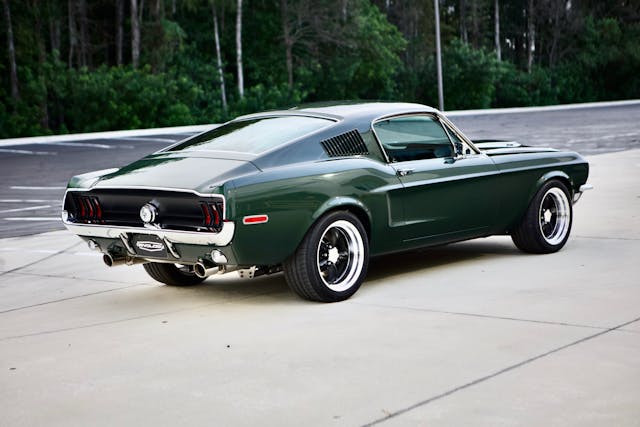
It doesn’t hurt that Ford CEO Jim Farley is a Revology fan, and that two Ford family members—Edsel, and Bill, who bought one for his wife, Lisa—own Revology Mustangs, with a third Ford family member presently planning out his build.
“No one had ever done this before. It’s difficult to get a company like Ford to do anything like this. Big companies operate on inertia, or competitive reaction, like if the other guy across town is doing it. And that wasn’t the case.
“The plan was always to build licensed cars. We never considered ourselves to be a custom shop. Our goal was always to be a manufacturer.”
Compared with most new cars, resale value appears to be plenty high. Revology has four certified previously-owned cars for sale, at an average price of $292,375. The cheapest is a 1966 convertible for $216,000.
The level of detail on these cars is remarkable, and authenticity is respected wherever possible. Scarpello could easily ring up Recaro, for instance, and buy some perfectly fine seats. Instead, his craftsmen design and build each seat for each car.
Otherwise, “We pick the parts that we want, and then we redesign the platform to accommodate them,” Scarpello says.
Example: The high-performance Ford engines Revology uses generate a lot of heat. It would have been simple to survey the aftermarket and gobble up a decent three- or four-core radiator and some cooling fans, but his engineers took the entire Ford factory cooling system associated with the engines and re-engineered the front of the car to make it fit. “We have cars in Arizona, as well as Qatar and Saudi Arabia, and we’ve never had a cooling issue,” Scarpello says. “That kind of thing would not be feasible for a restomod builder. Couldn’t do it.”
Revology has 176 cars in 18 countries, Scarpello tells us, and the cars are drivers even outside the U.S. An owner of a Revology 1968 GT Fastback Mustang, Botswana’s Clinton Van Vuuren, entered it in The Cape 1000 this year, a rugged four-day drive starting and finishing in Cape Town, South Africa. In many ways a typical Revology customer, Van Vuuren has a collection of 60 classic vehicles.
There are some celebrity owners too, like comedian and car collector Kevin Hart, who has a black 1965 convertible. “Two of our owners have five of our cars apiece,” Scarpello says, and a third is buying one of all eight models Revology offers. Base price for a 1968 Mustang GT 2+2 fastback Cobra Jet: $291,760.
The car I am driving, build number 184, was pulled directly off the production line before final inspection. Clearly Scarpello had enough confidence in it to put a writer behind the wheel.
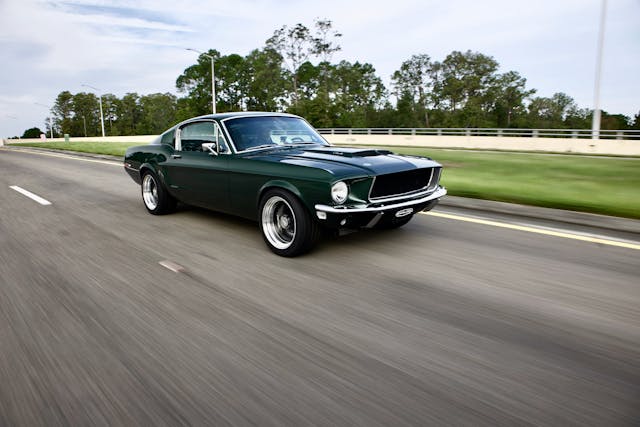
Its options range from polished, flush-mounted hood latches ($635) to a Focal K2 sound system ($4895) to full Nappa leather upholstery ($10,475). The leather-wrapped, three-spoke steering wheel (no airbag, not required under the law) is $1290. I would have preferred the wood steering wheel, but that’s my only complaint. The perfectly-applied Highland Green metallic paint (which is not saying it’s a Bullitt) costs $975.
Those charcoal Torq Thrust wheels ($2195) hold fat P275/40ZR17 Michelin Pilot Sport PS2 radials. Carpet is square-weave wool: $3375. Under the hood isn’t the Cobra Jet engine but something better and much more powerful: A Roush-tuned 5.0-liter supercharged V-8 rated at 710 horsepower and 610 lb-ft of torque. Transmission is a close-ratio Tremec T56 six-speed manual, attached to a heavy-duty driveline. A 10-speed automatic is also available; take rate between that and the manual is about 50/50.
Push a button and the engine roars to life, burbling through a Borla exhaust. Snick it into gear—clutch action is firm but not tiringly so—and go: The suspension, with coil springs and control arms up front and a live axle out back, is stiff but adequately compliant. The ride won’t beat you up but it does allow for very flat cornering, on whatever few corners we can find on Florida roads.
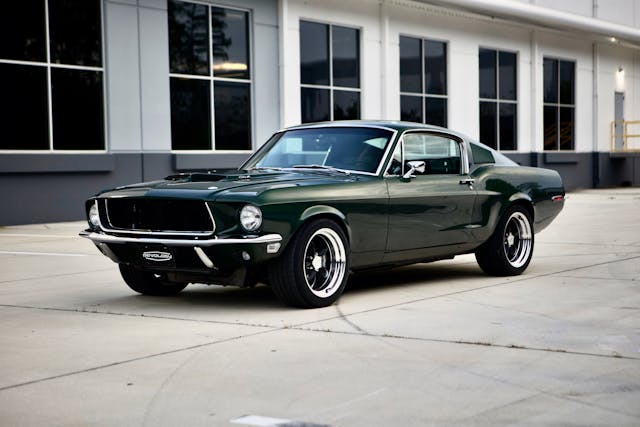
The Tremec is typically a smooth-shifting transmission, no different in this application. Blast through second and third gears and the Borla’s exhaust note goes from burble to roar. The very good kind of roar. Power rack and pinion steering is light, and the big 13-inch brakes work as you’d expect for a modern street machine.
Yes, I can see this as a daily driver: All I need is $322,130 to make it happen.
Bottom line: If Detective Frank Bullitt had one of these cars, and we aren’t saying this is a Bullitt Mustang, the chase scene in the movie would have been a whole lot shorter.
***
Check out the Hagerty Media homepage so you don’t miss a single story, or better yet, bookmark it. To get our best stories delivered right to your inbox, subscribe to our newsletters.

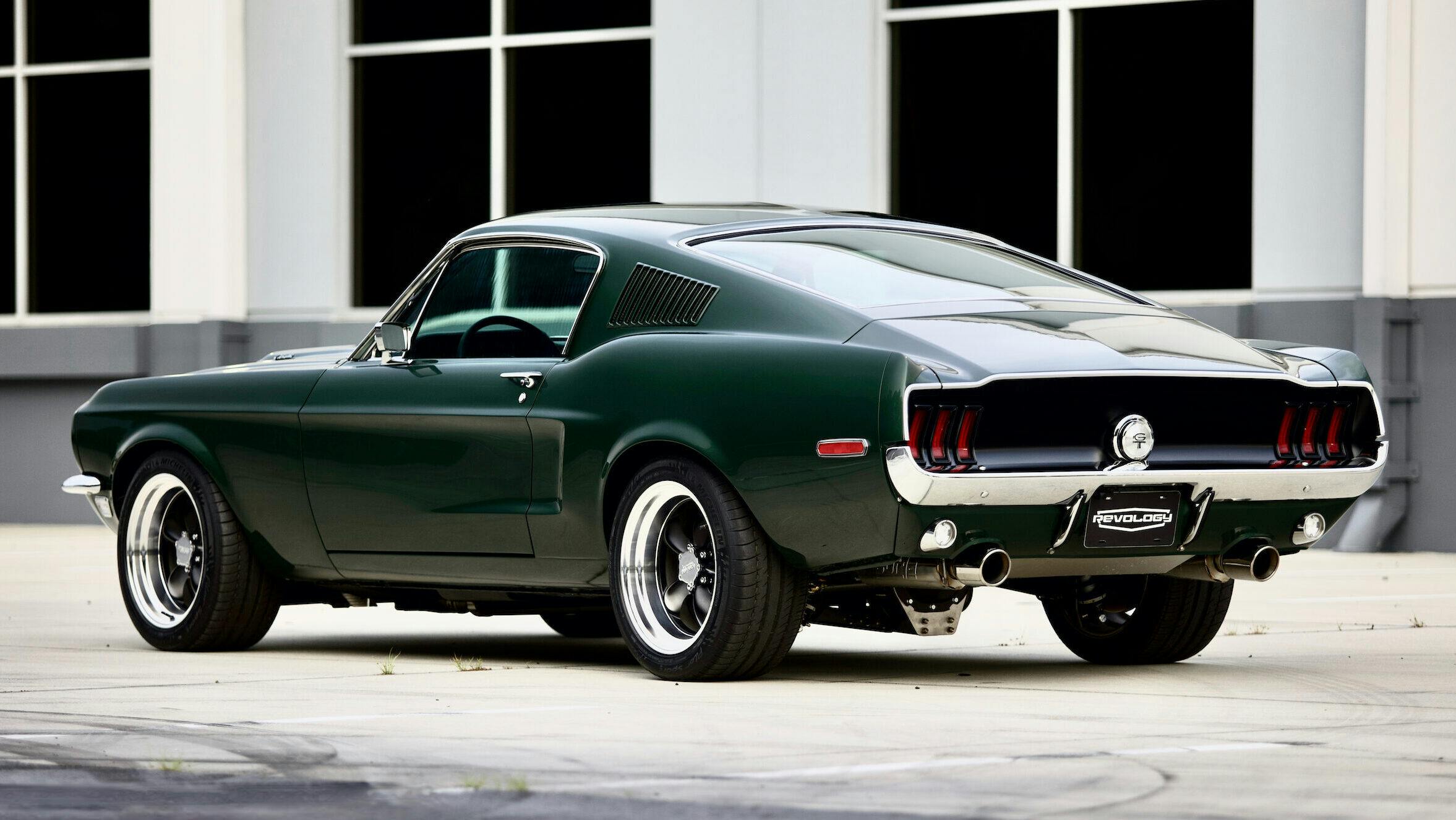

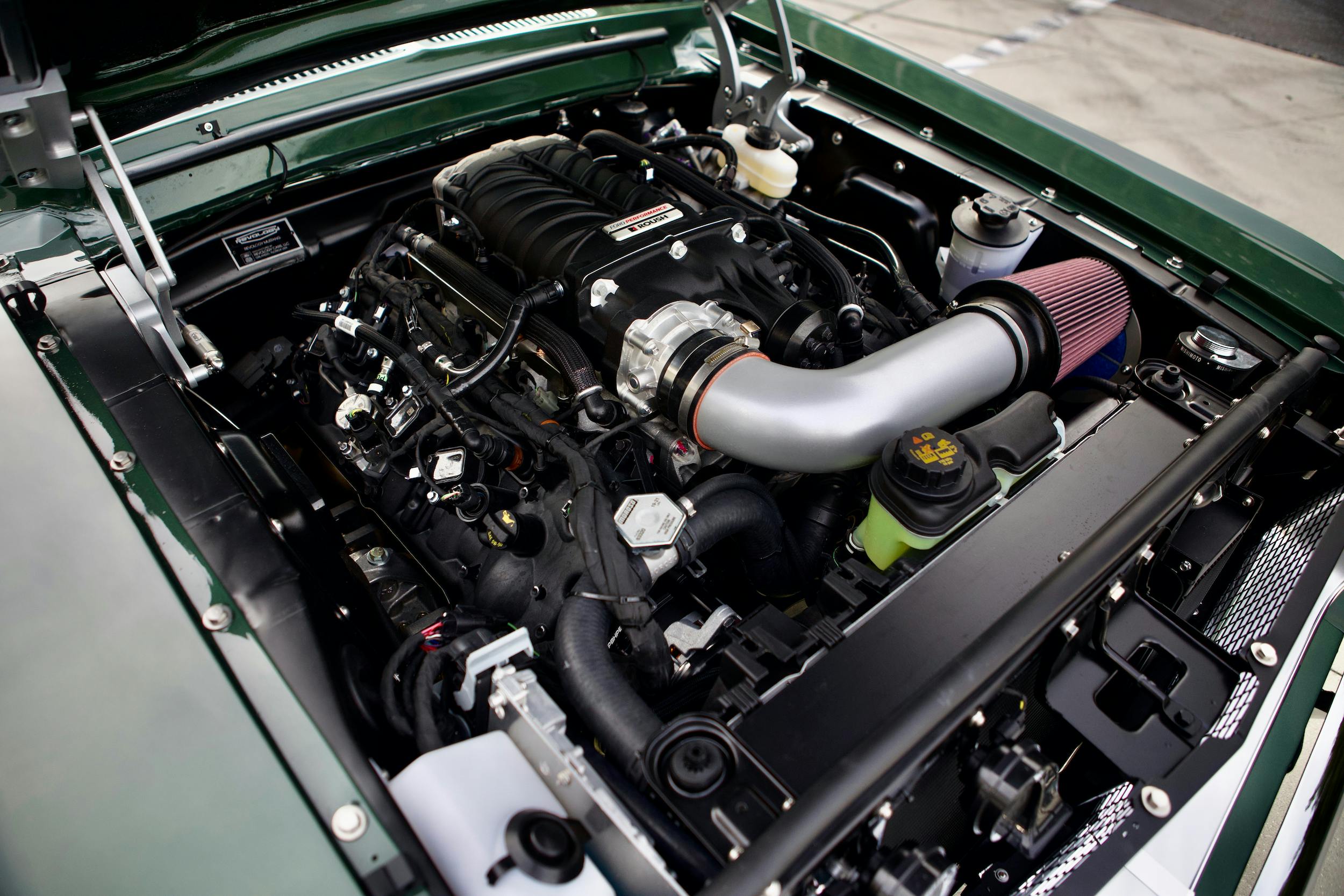
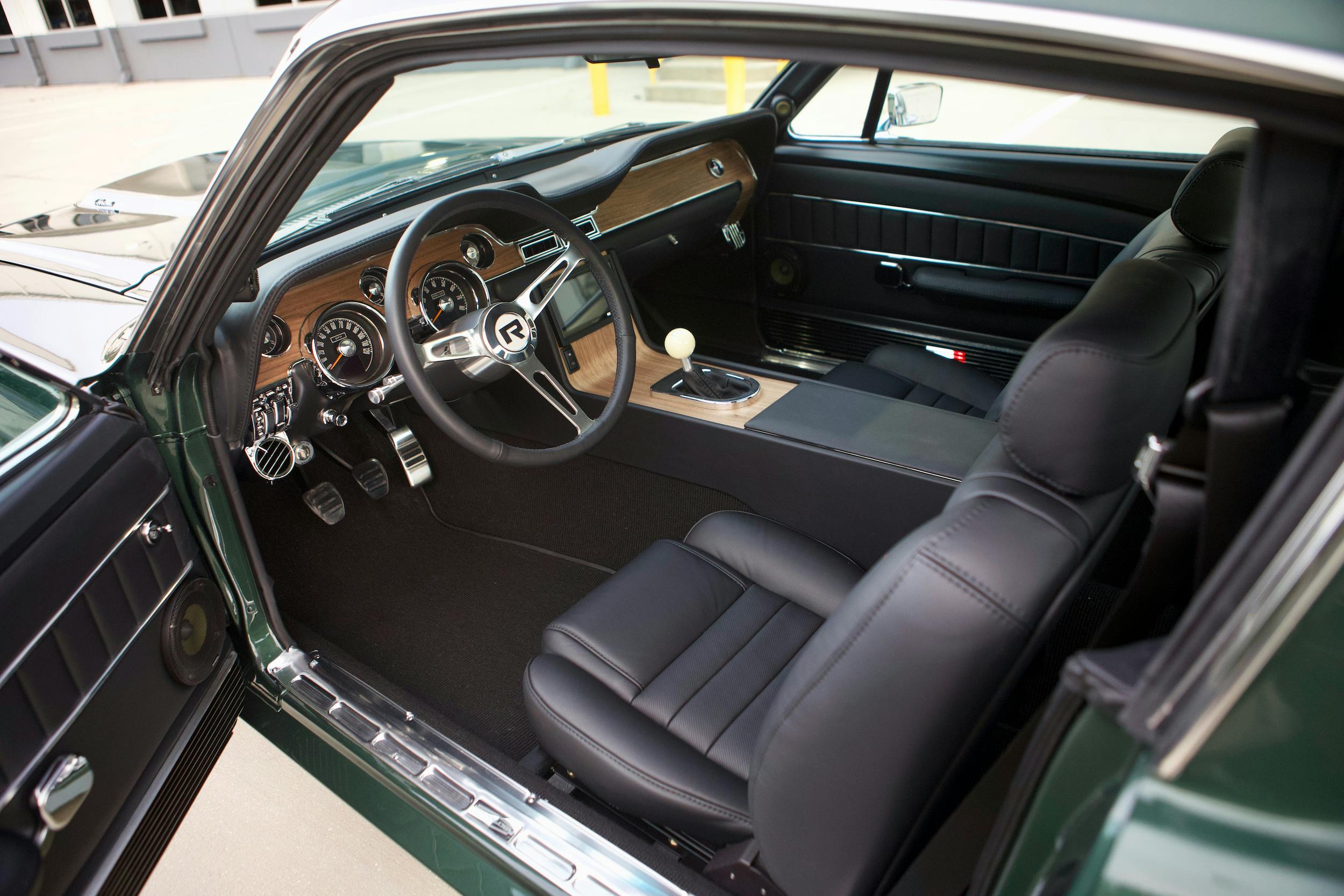




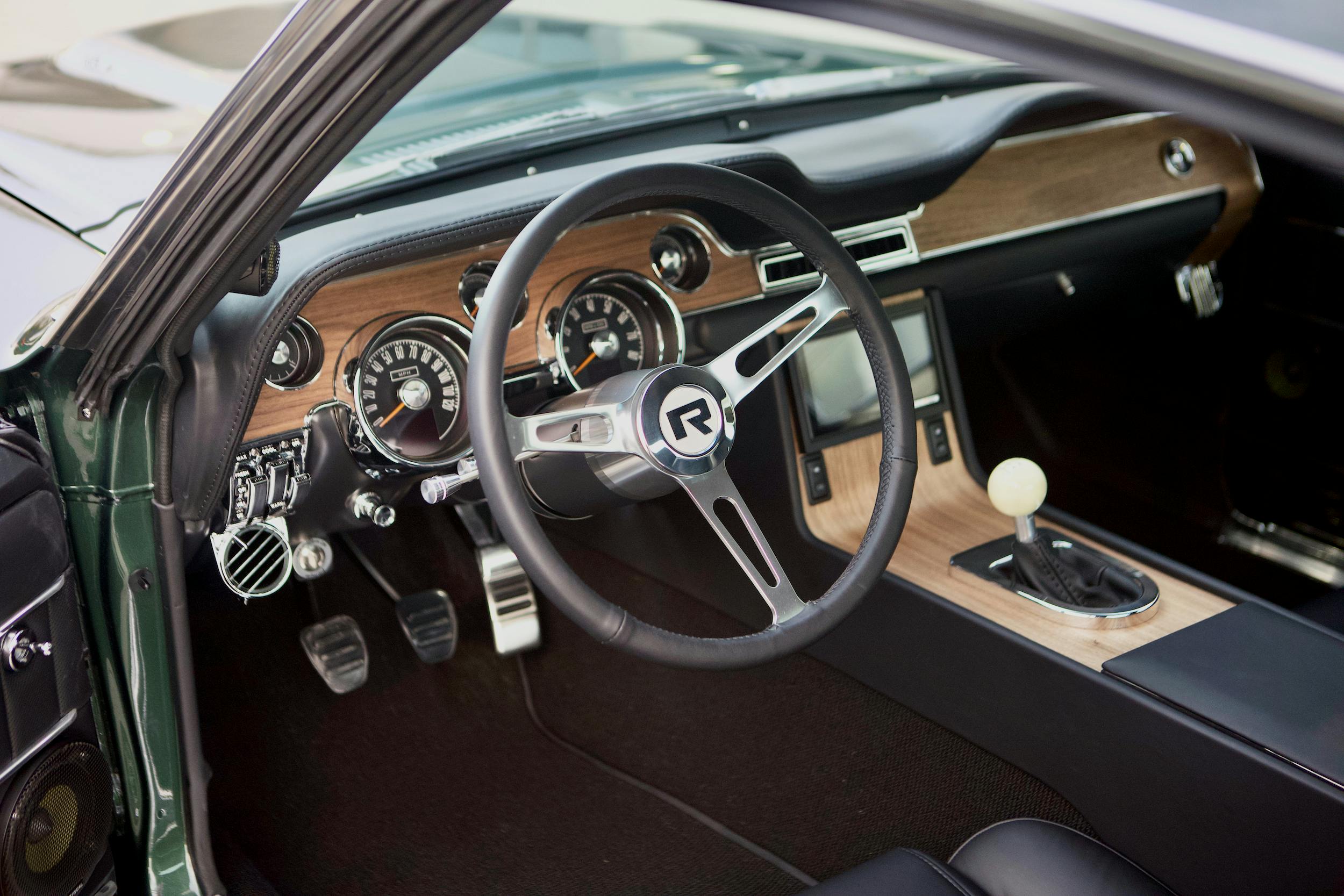
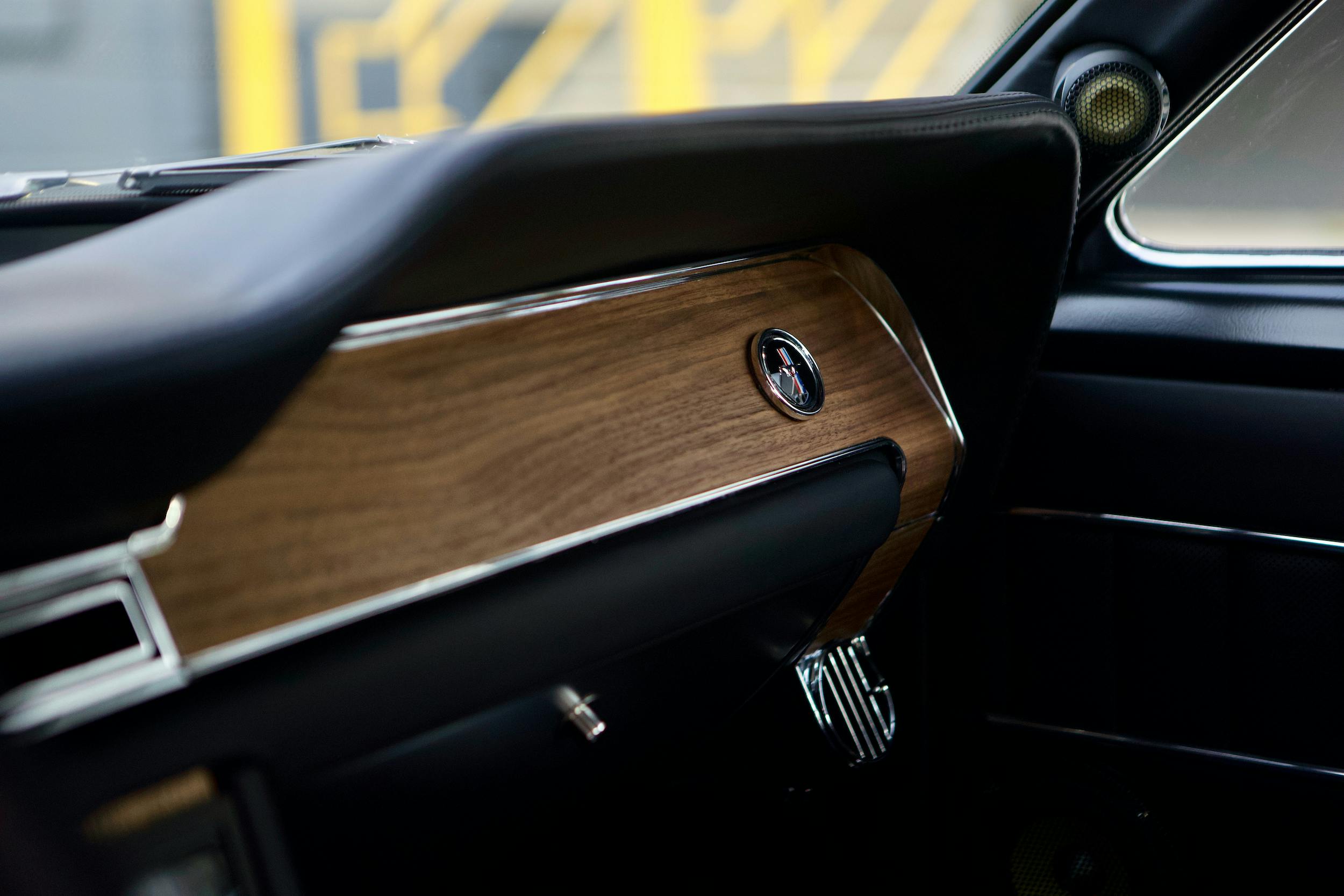
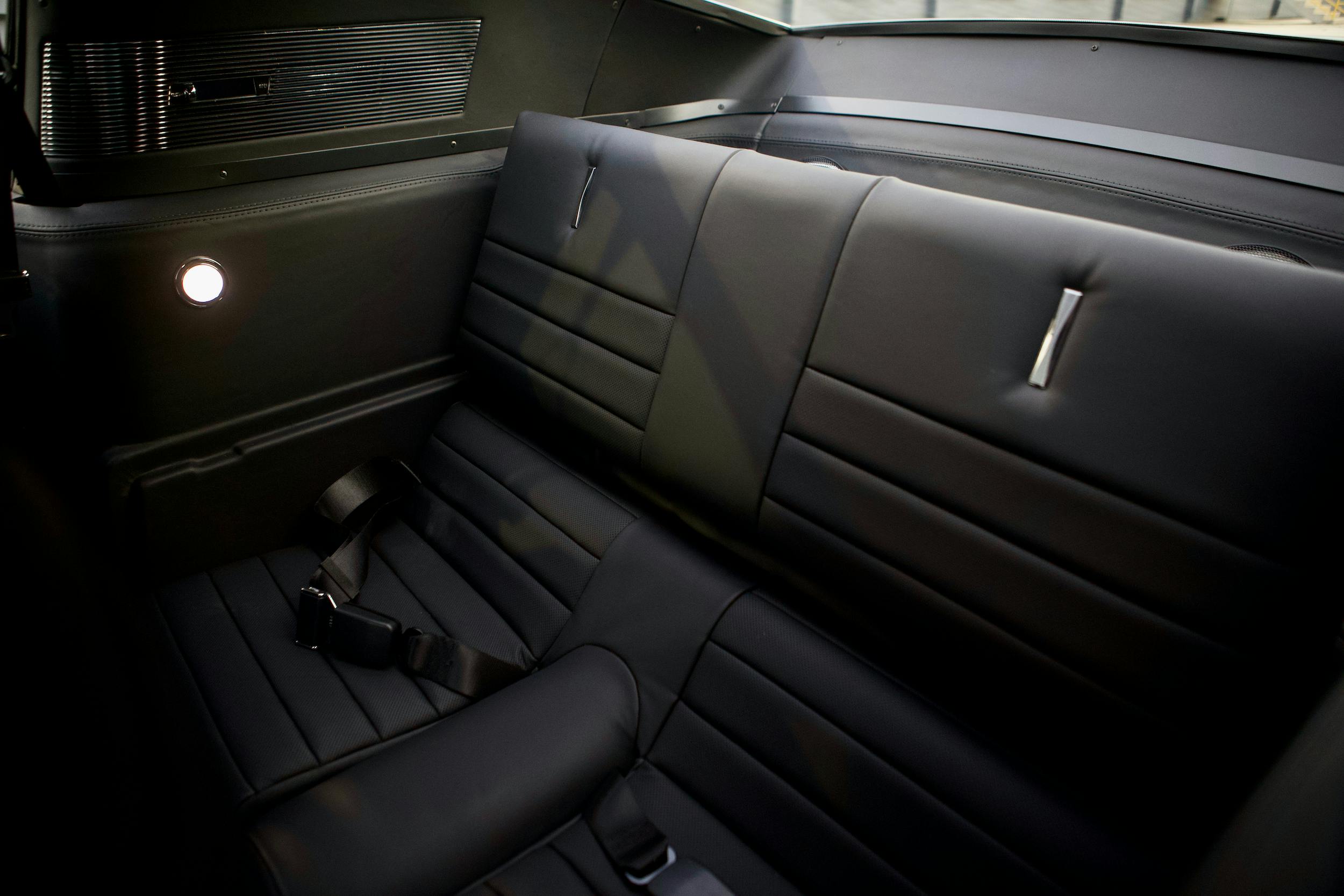
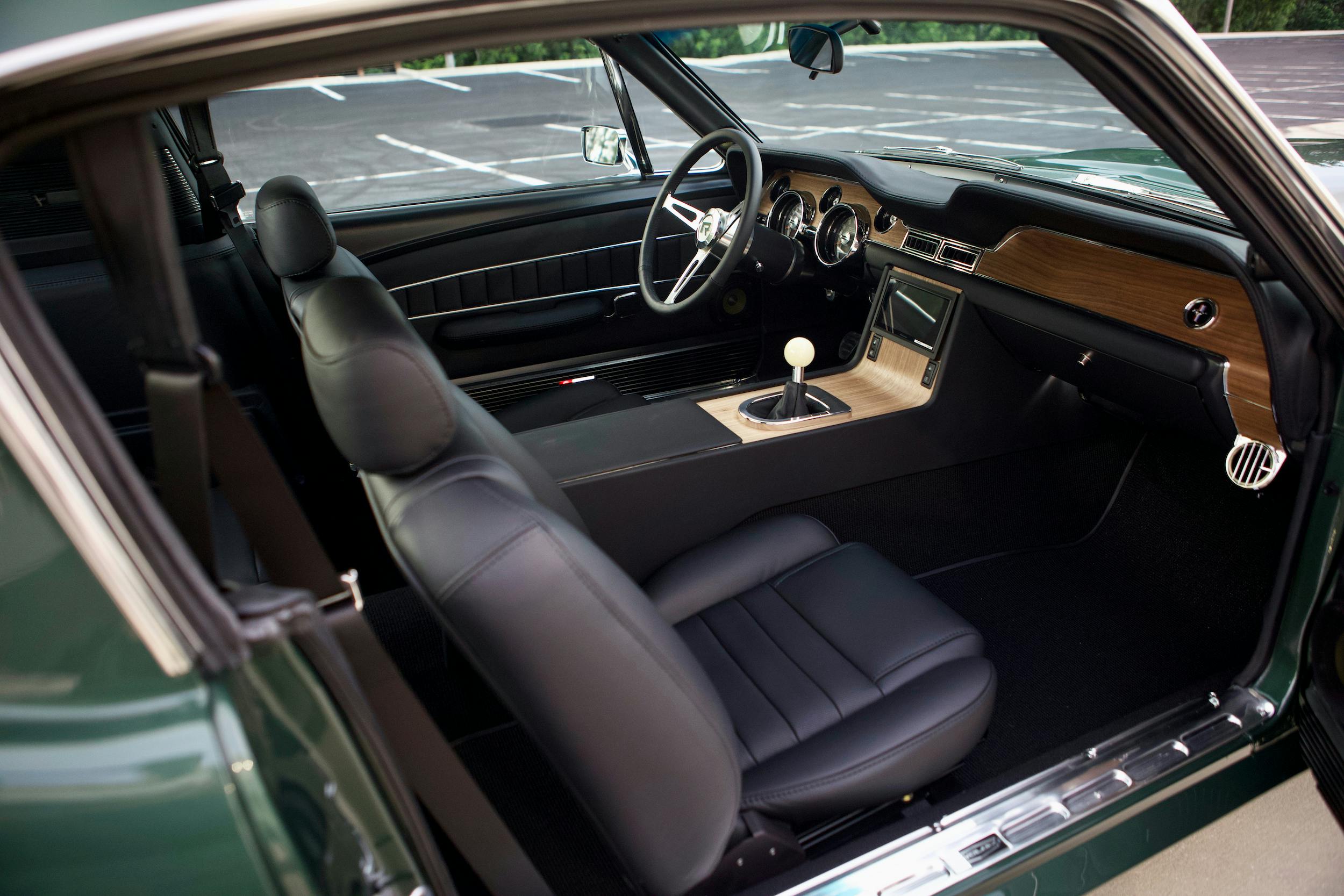
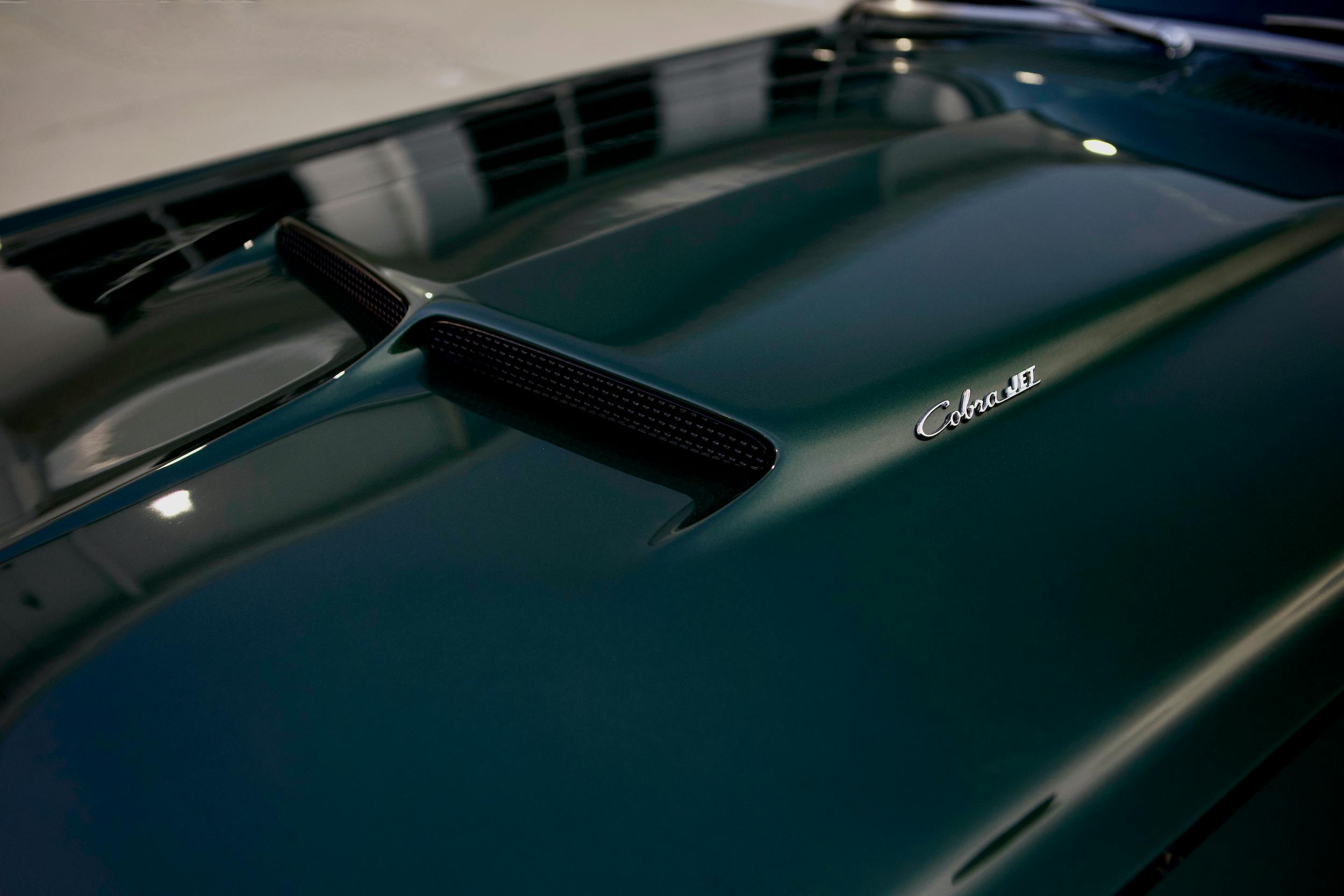

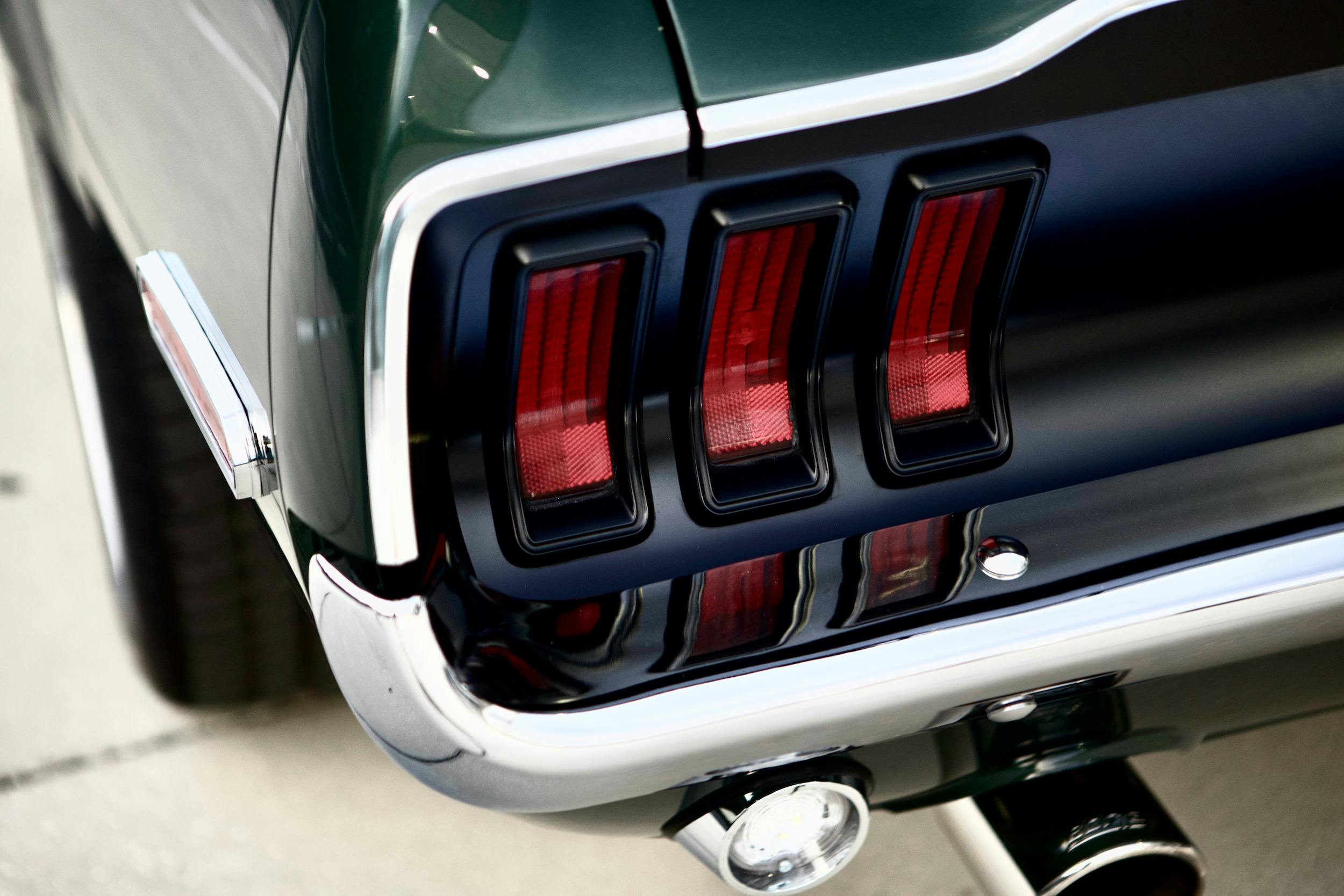
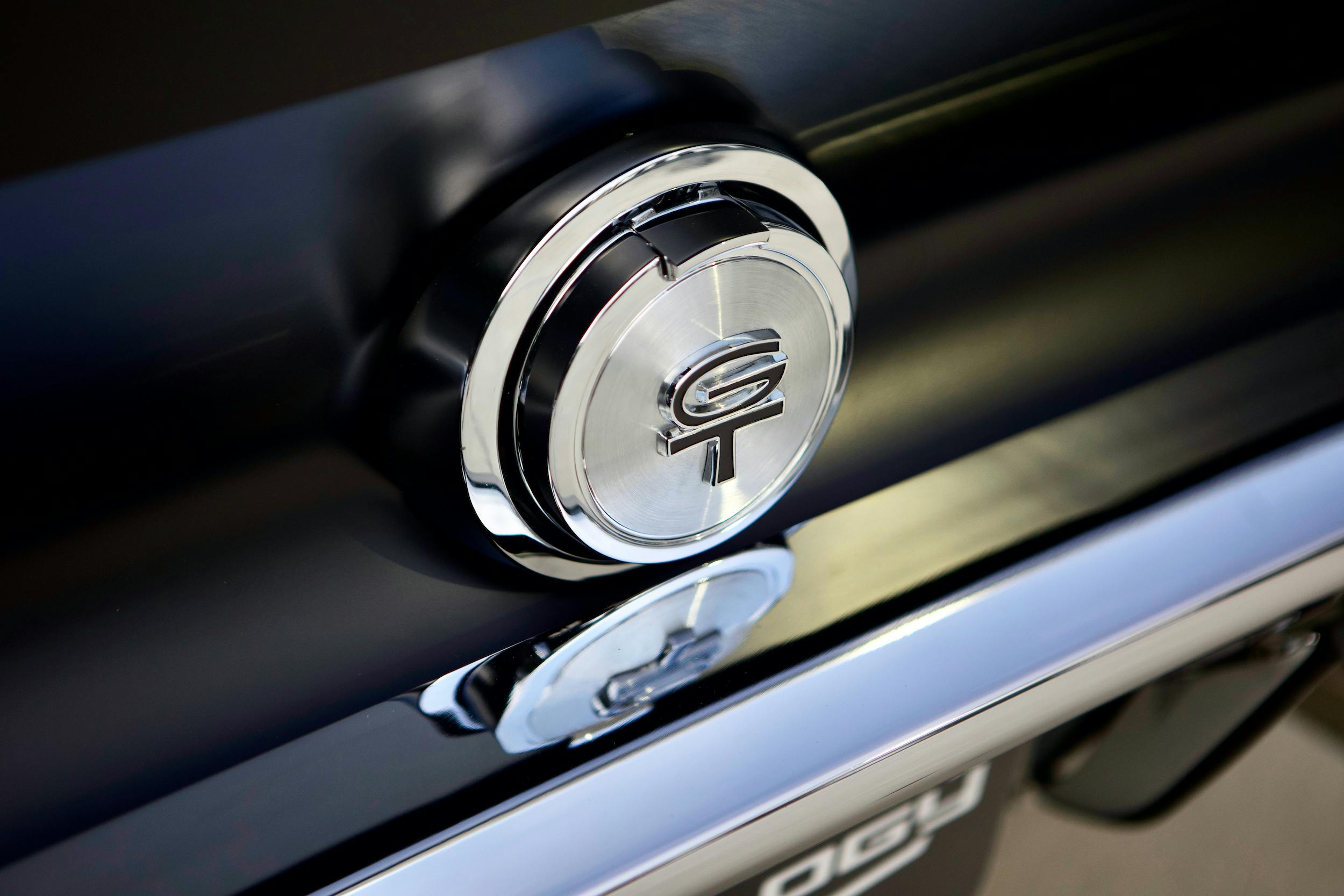
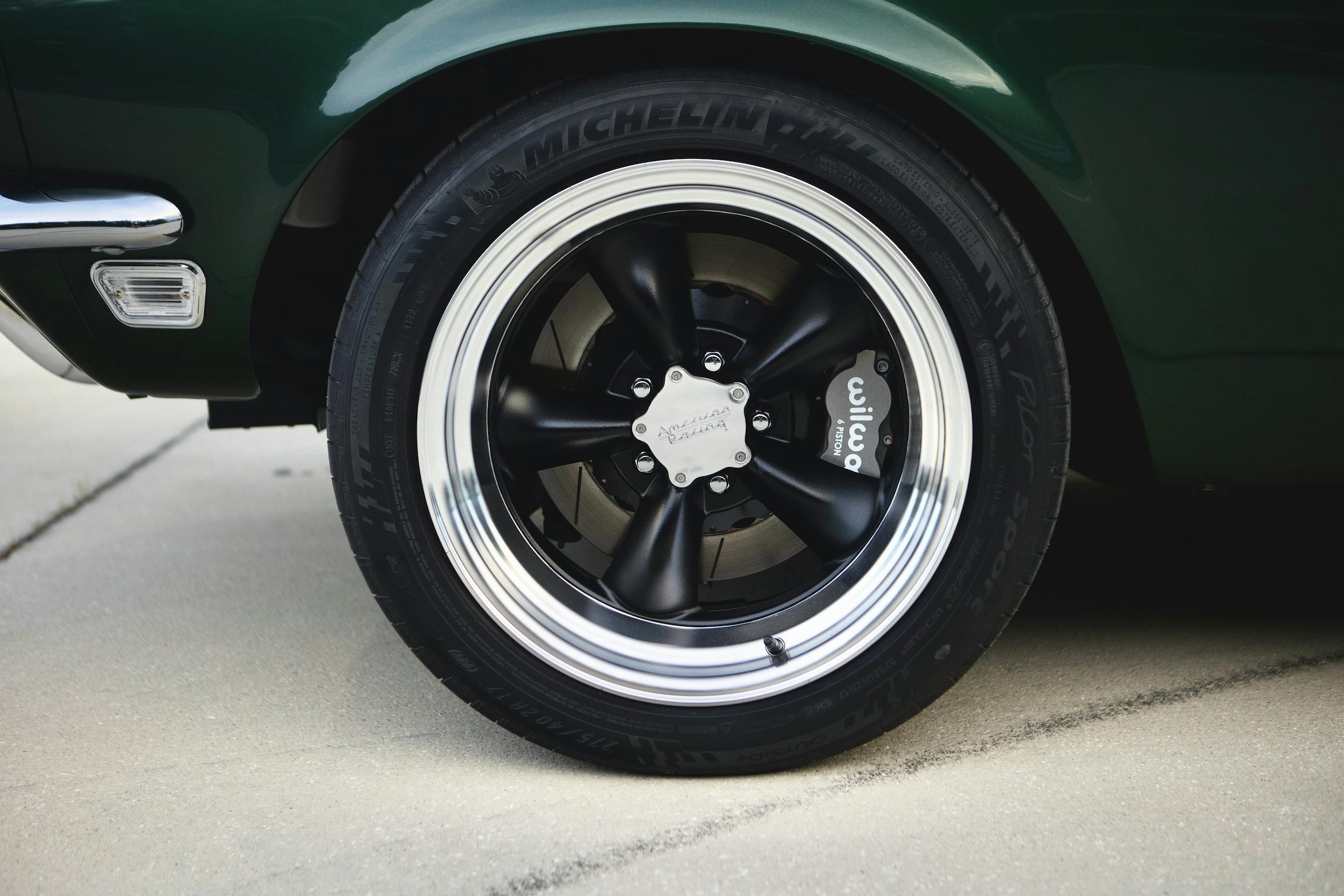

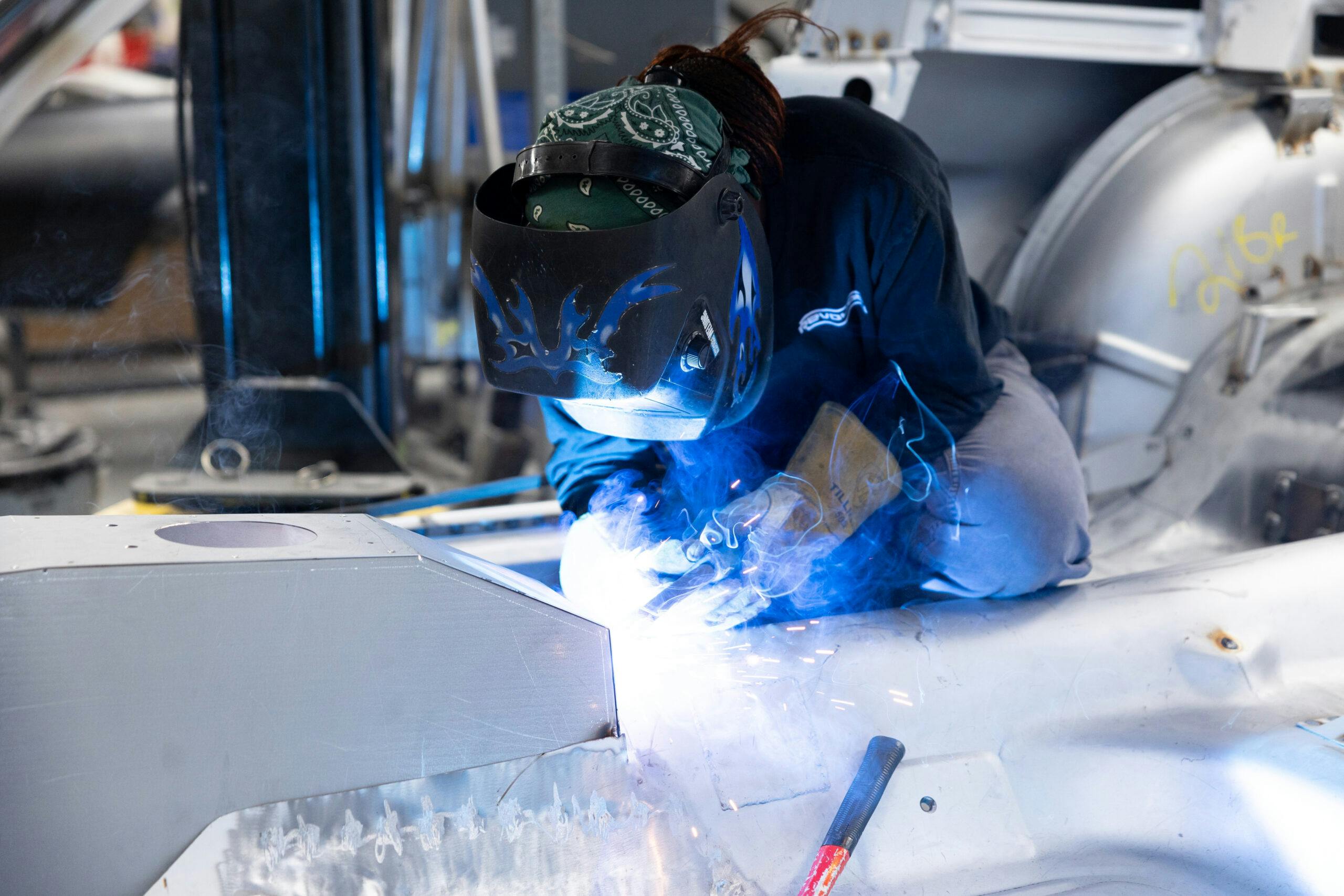
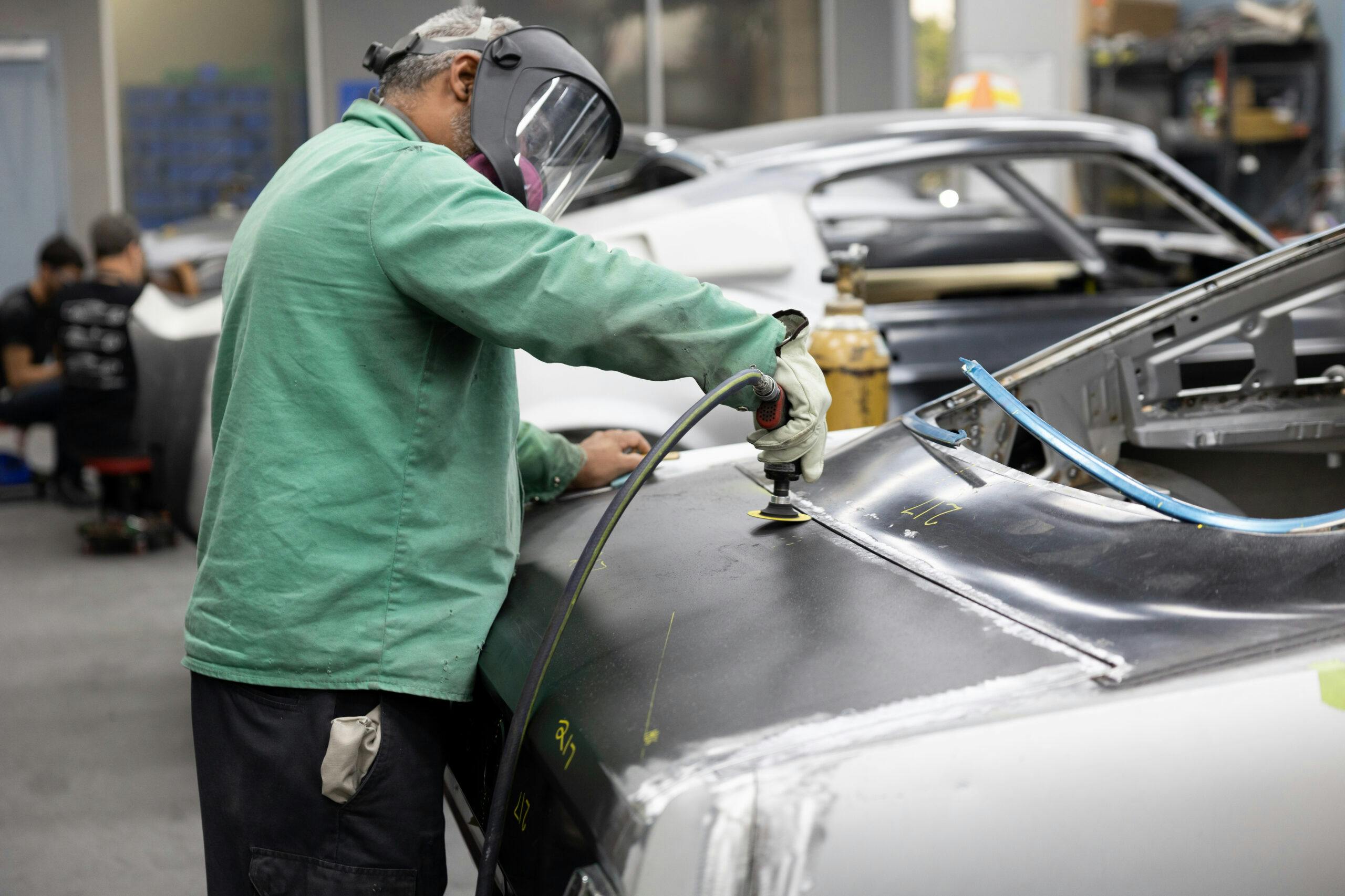
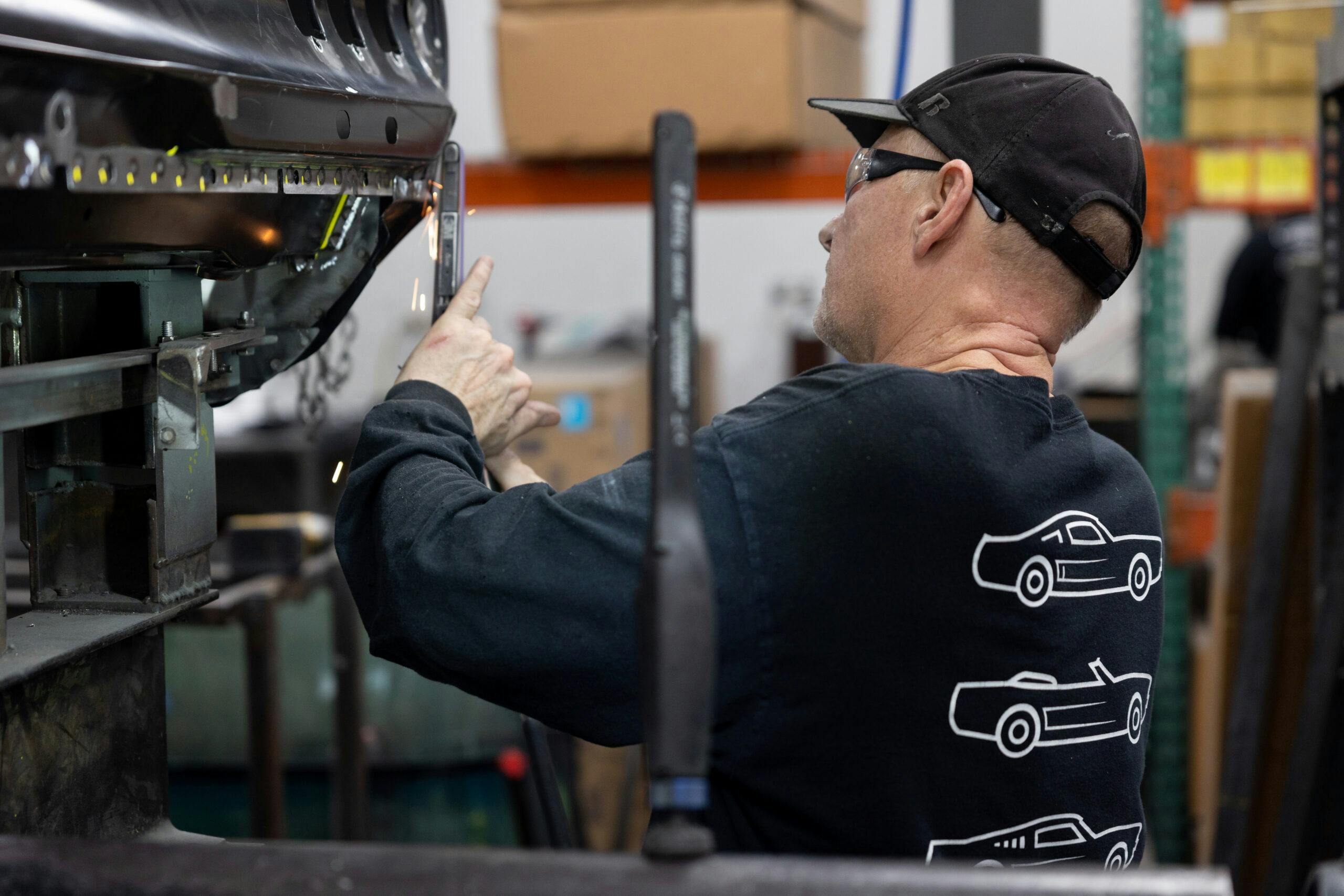
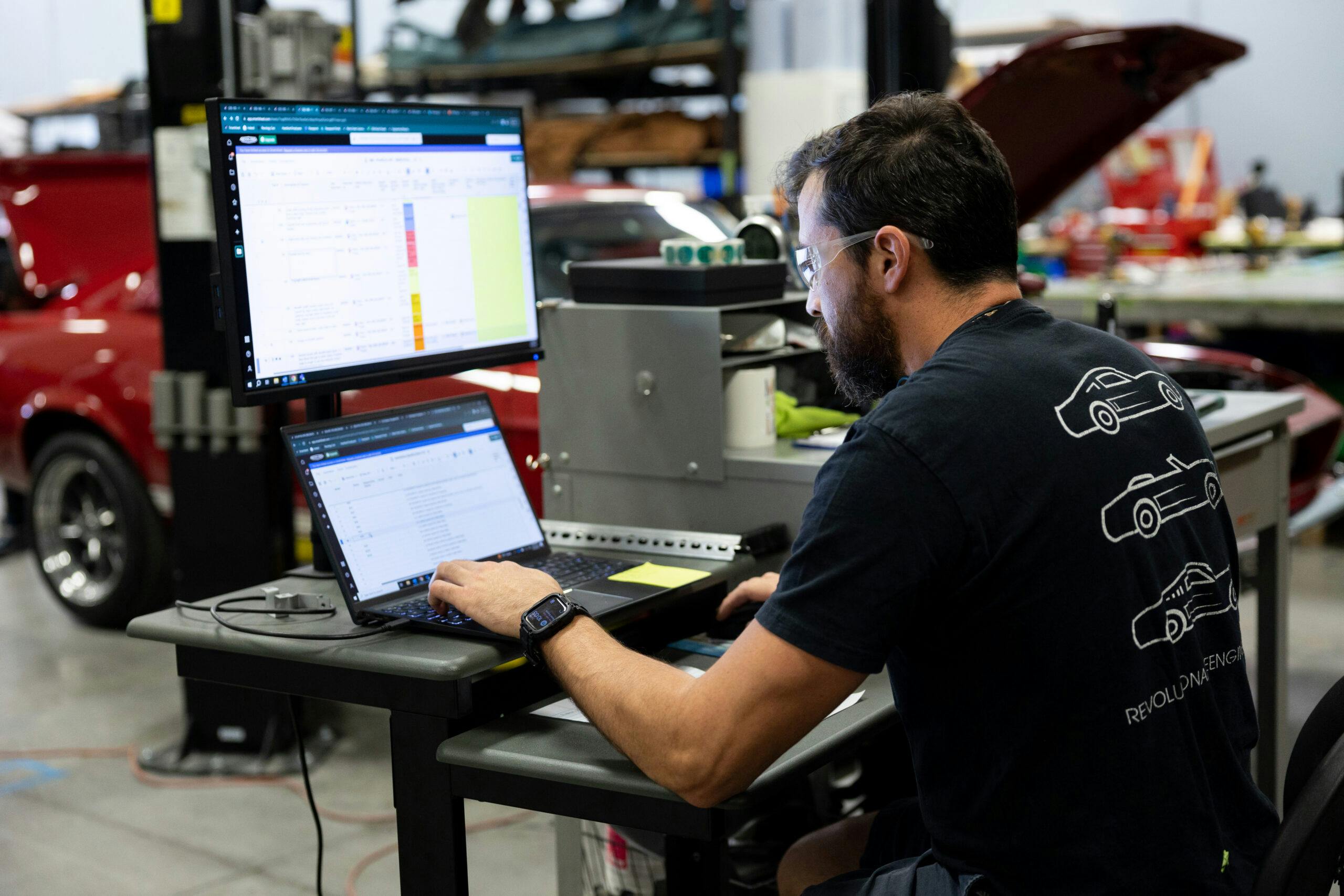


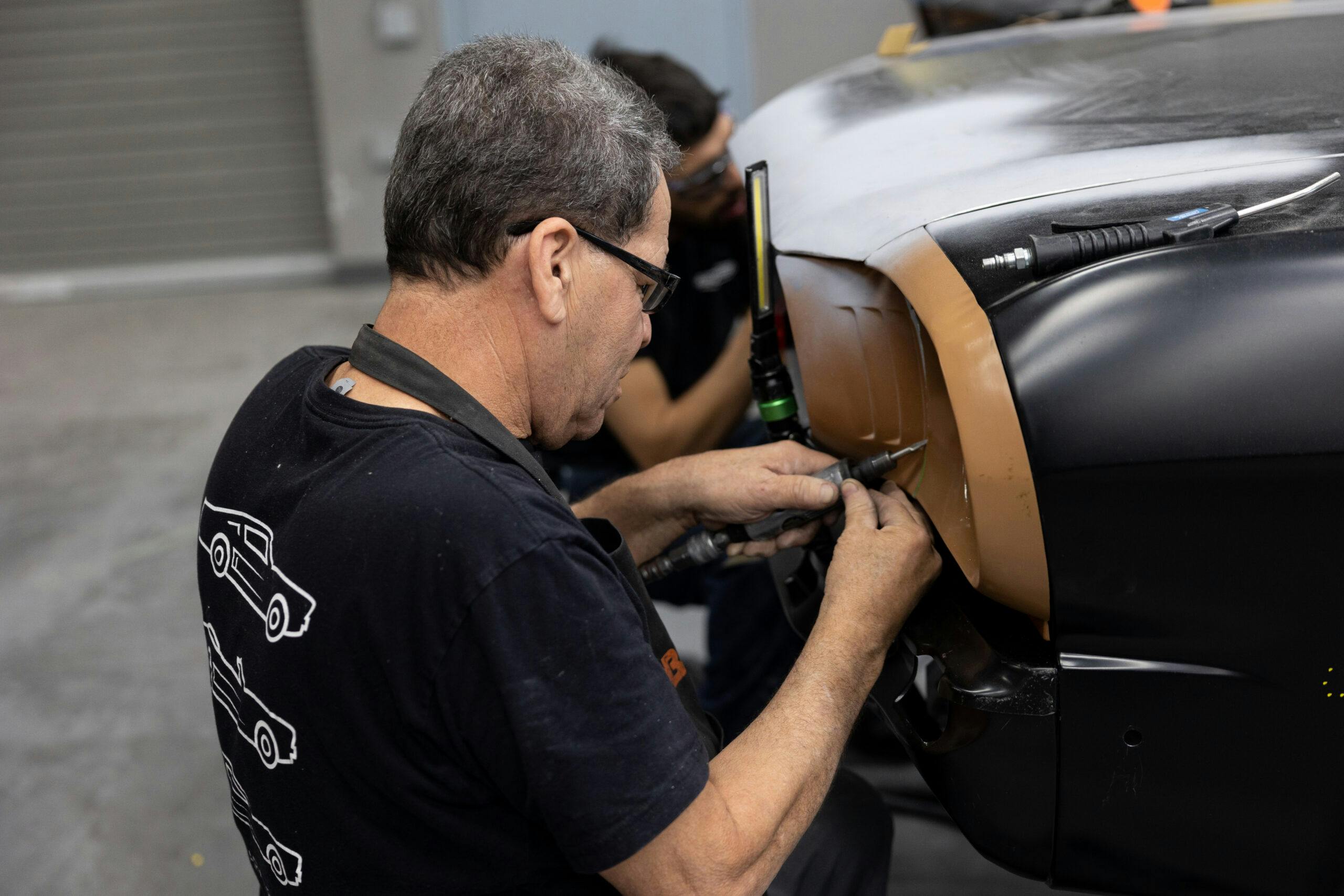

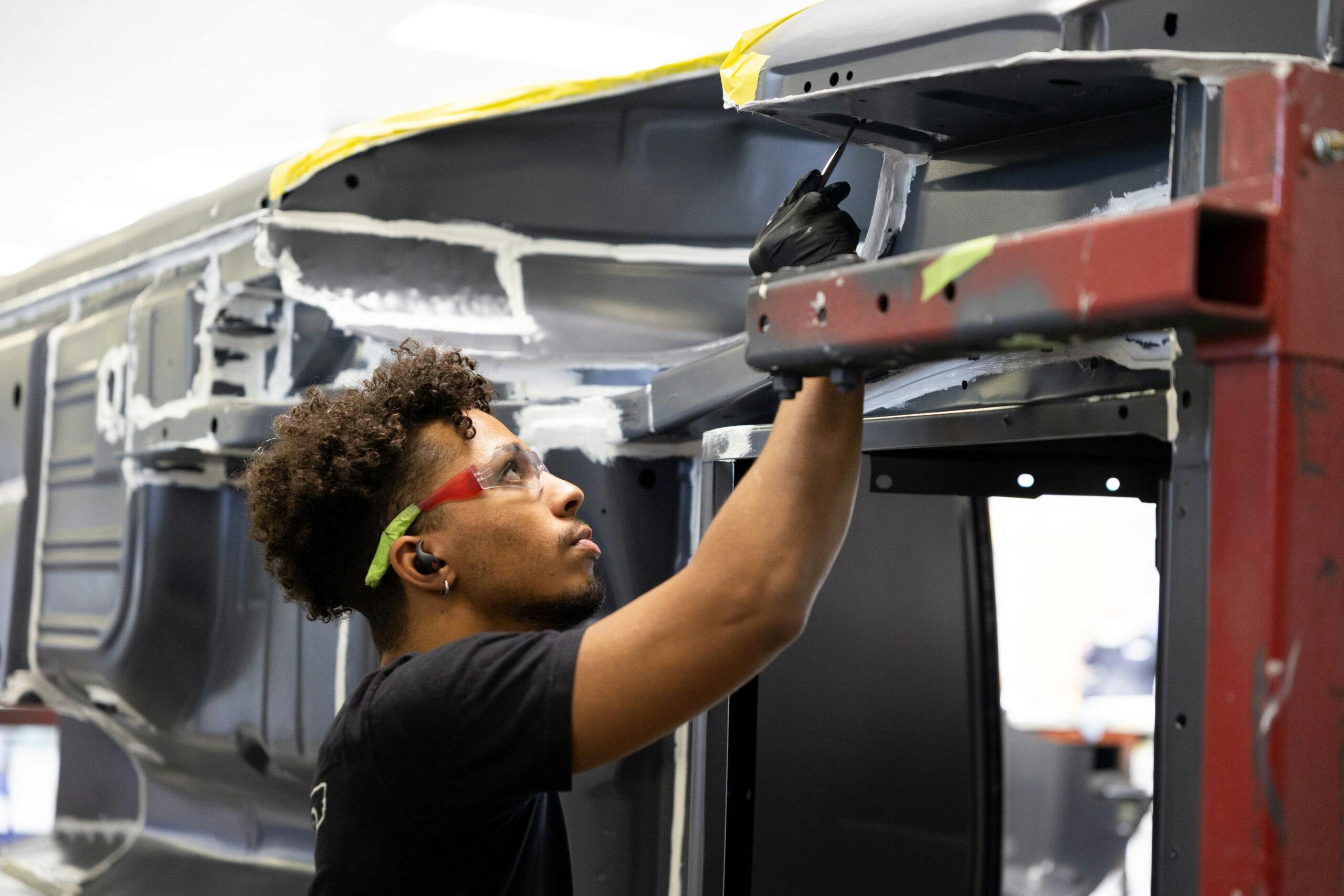

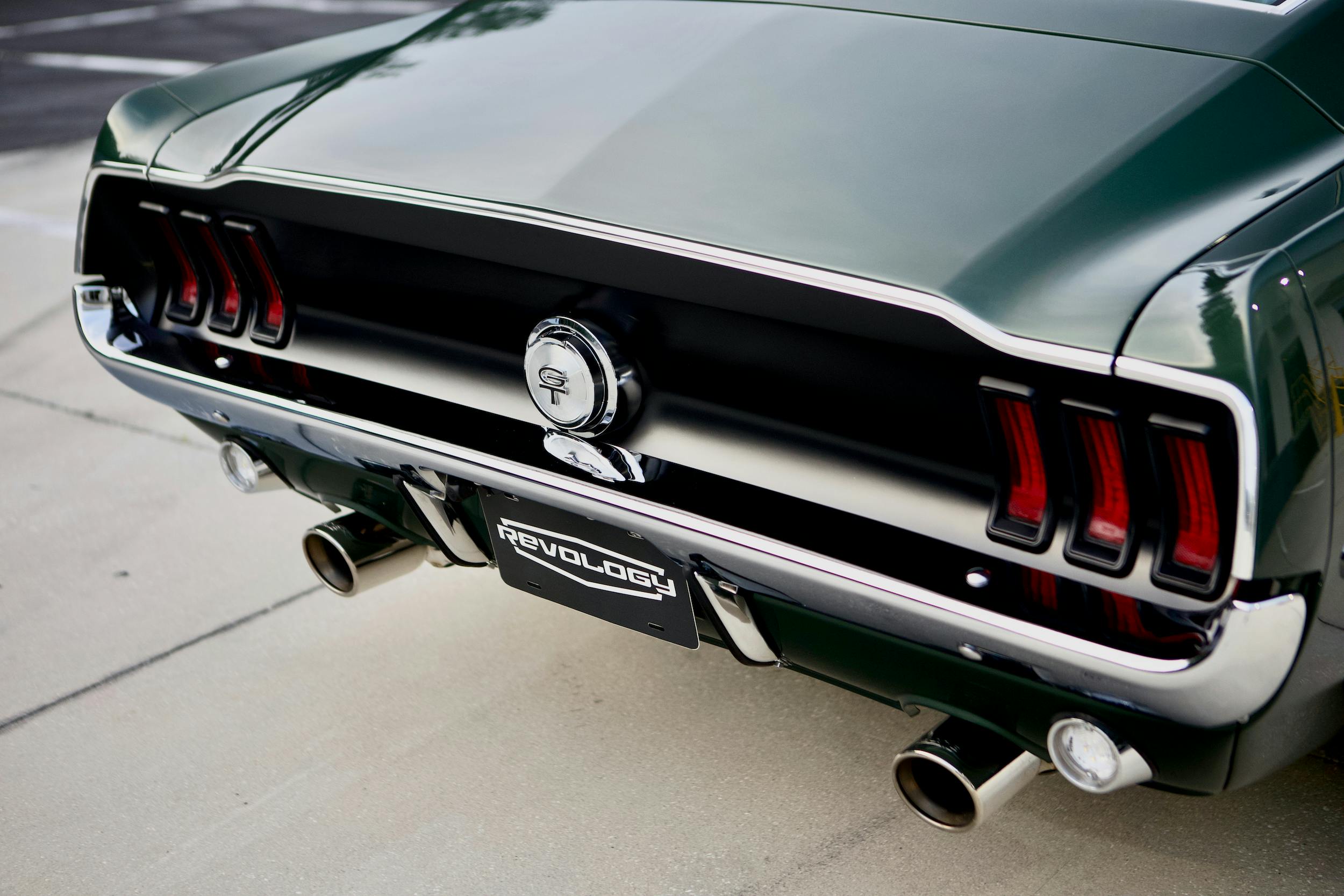
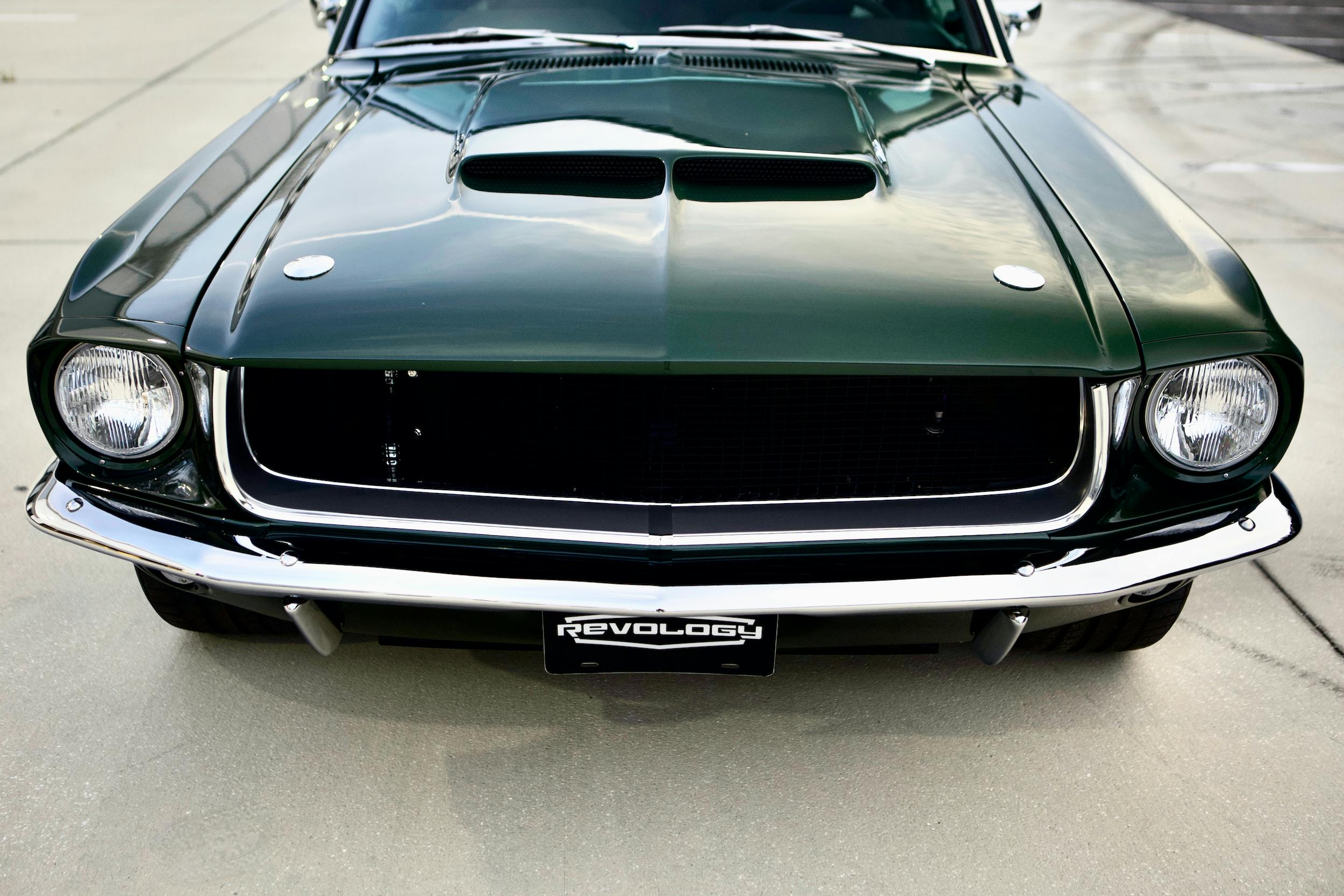
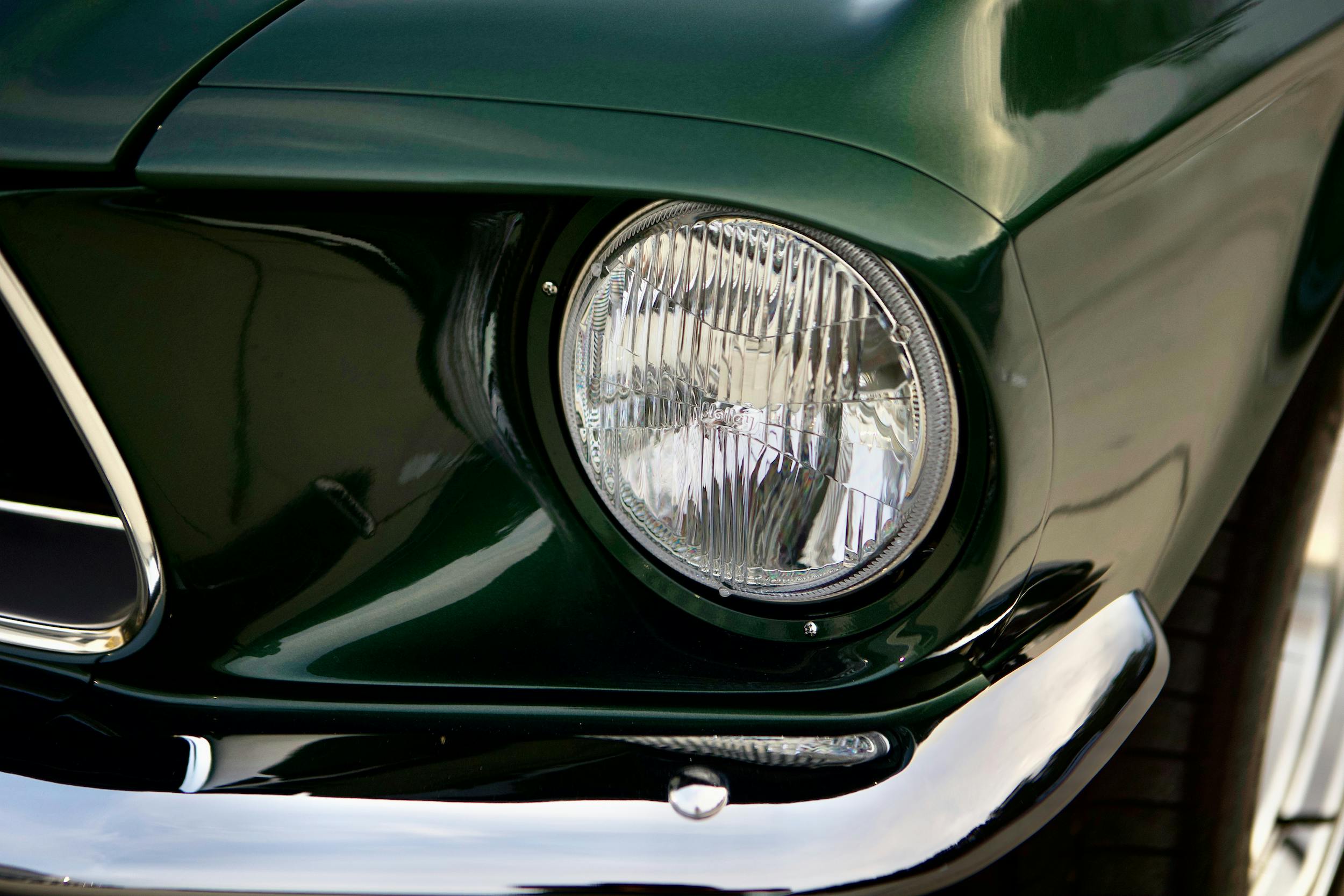
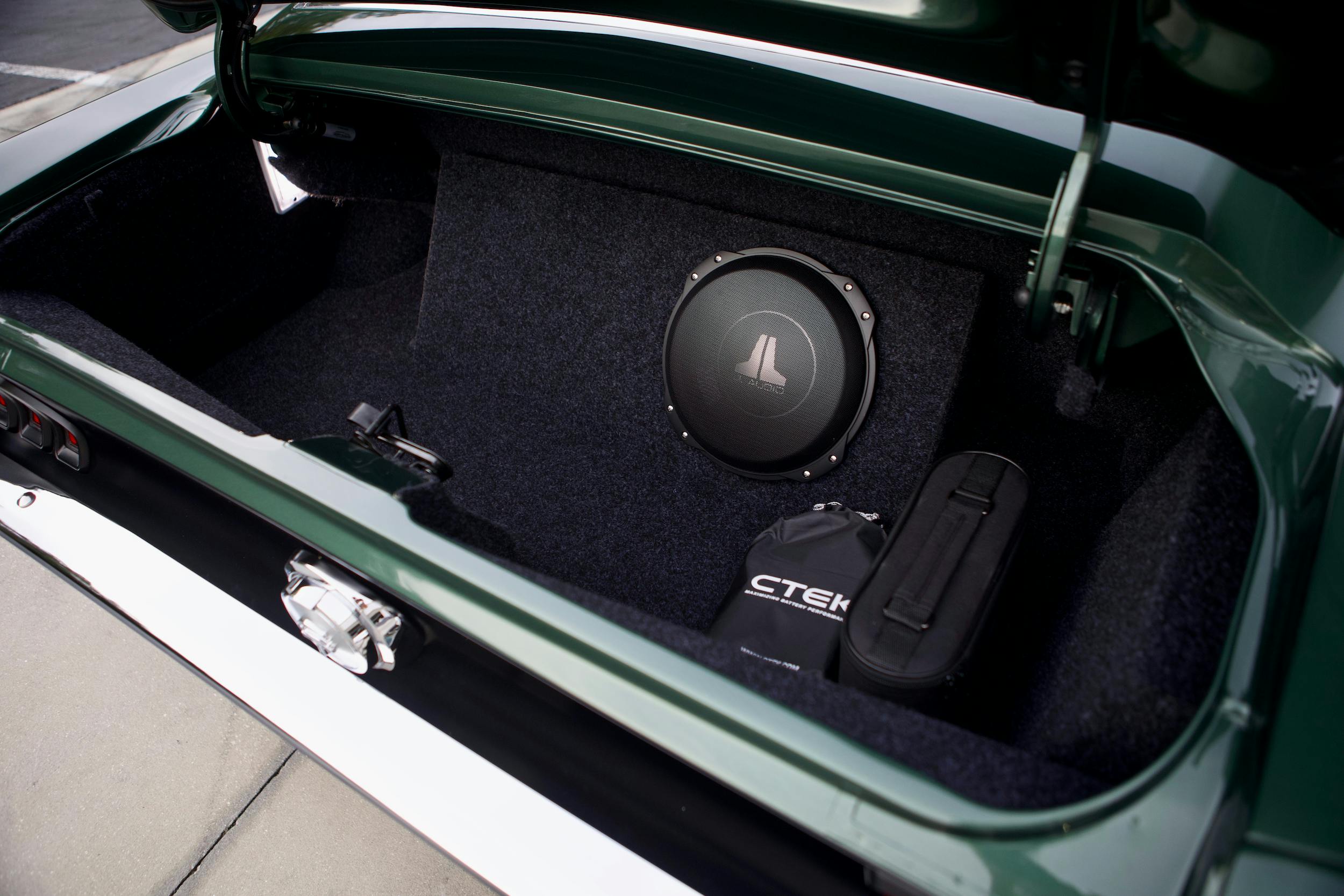
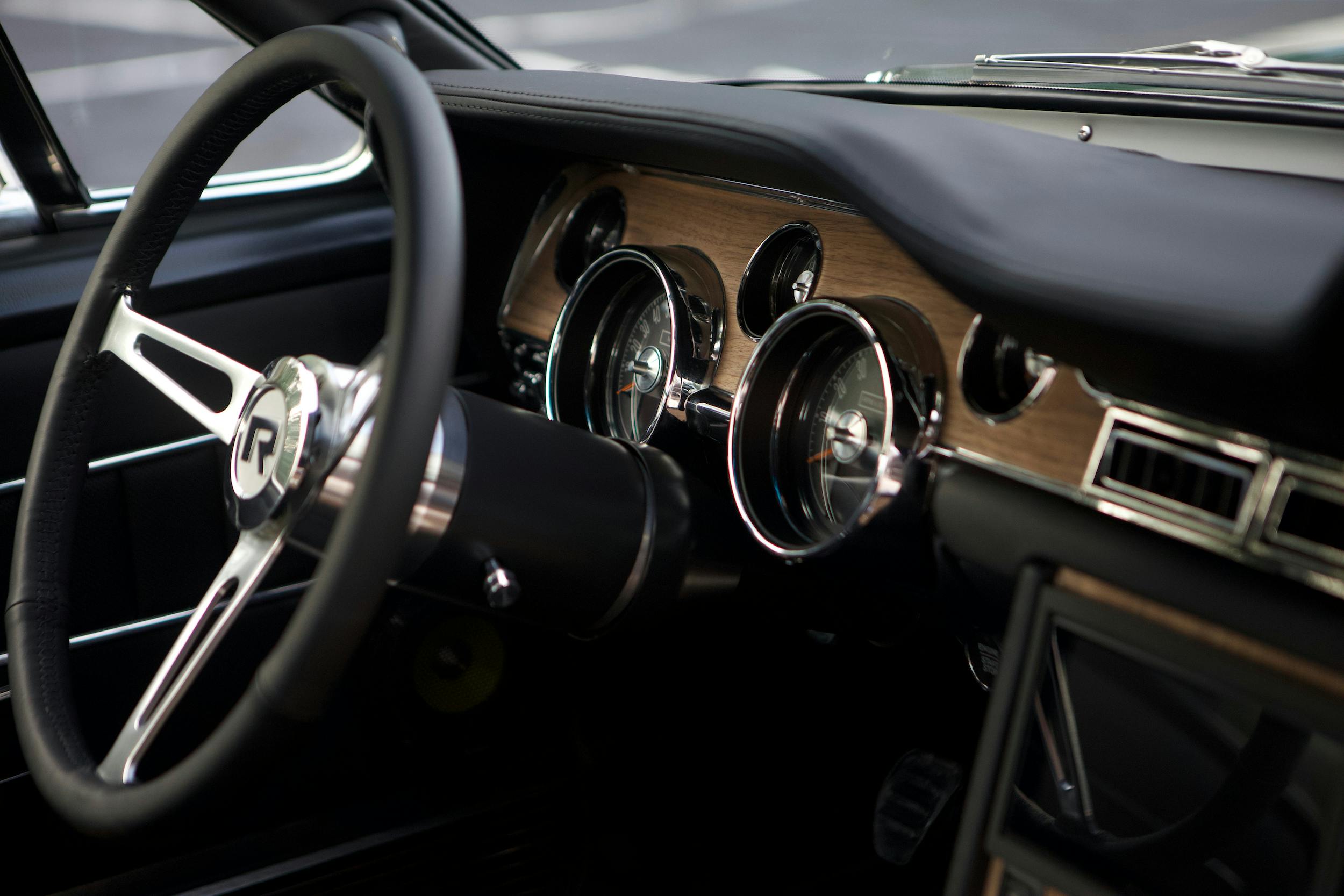
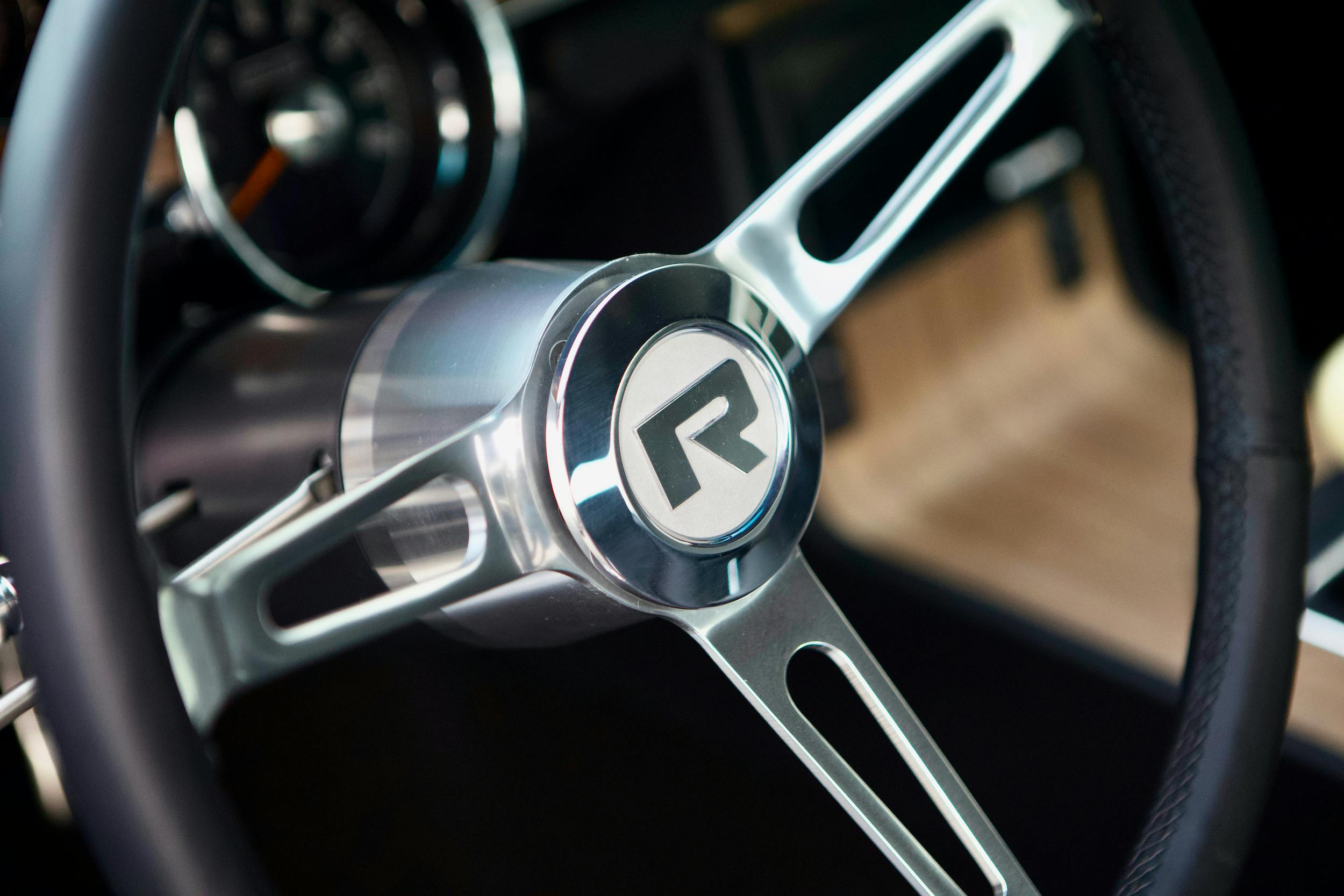


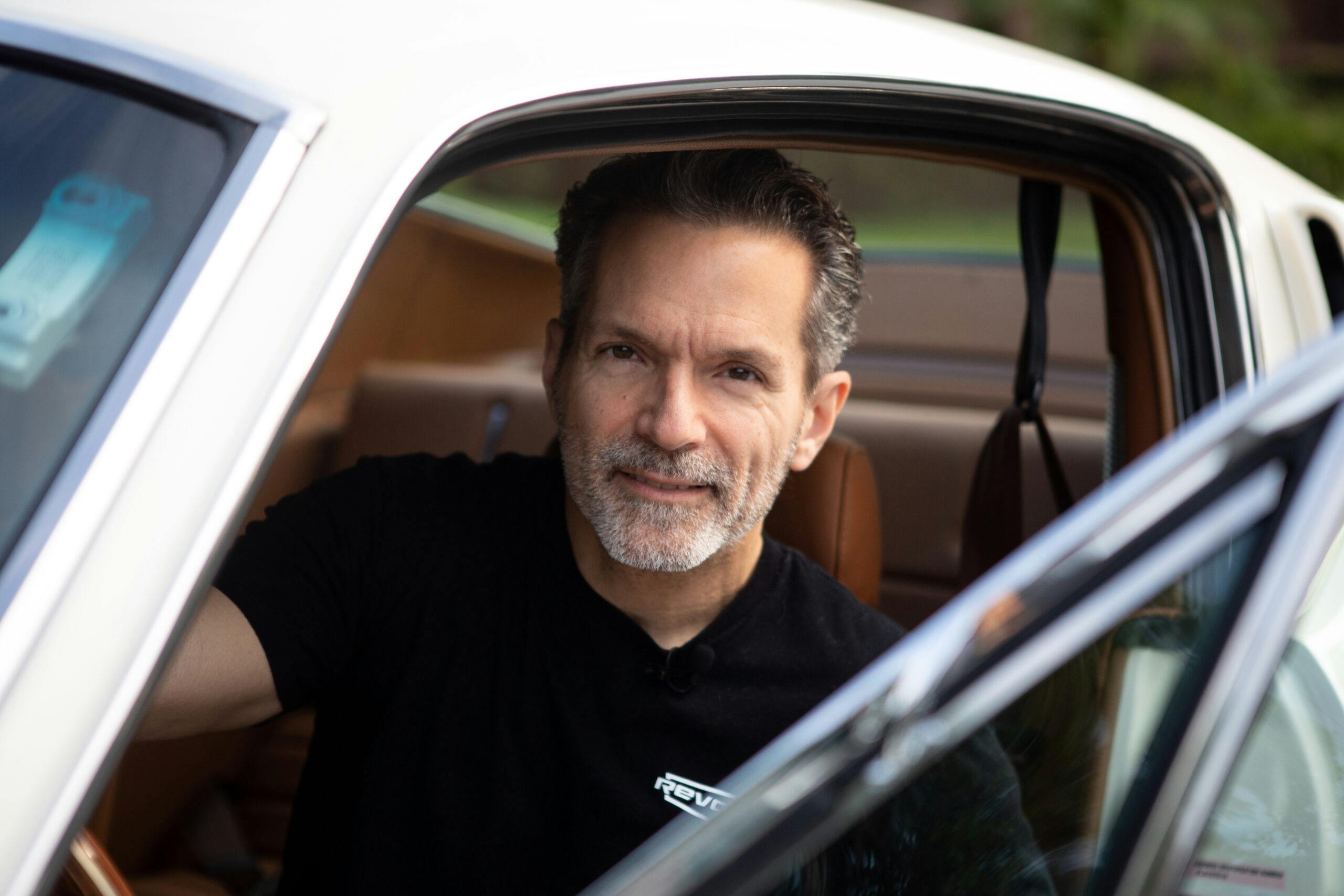
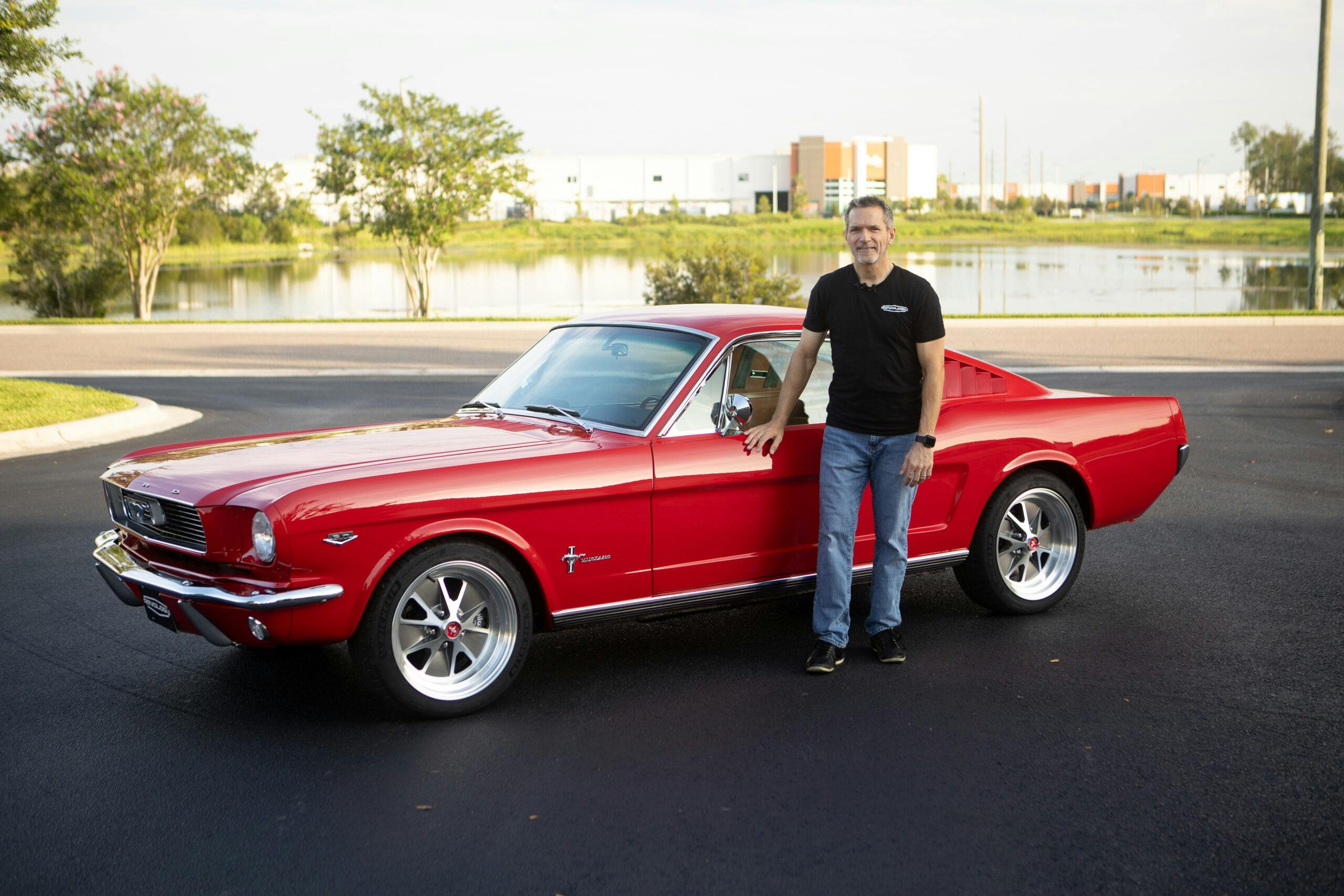


The first official Mustang was a 1965 model. Why wouldn’t a 65 make an acceptable base? I know the first gen Mustang metamorphosed gradually from 1965 to 1973 but did it change THAT much from 65 to 66? Just curious. Great car. Not six figures great for me but I can admire it without writing a six figure check thank you.
Good question, Brian. I’ll ask Tom.
At one time, Revology was going to come out with a package to let peop!e at home build a mustang with all the modern touches. You supply the car and motor. Revology sends you most everything else. Hasn’t worked out so well. My friend is still waiting on promised parts several years later
Bullitt is 68 Mustang, not 67. Revology’s modern version is evokes a 68 as well with side marker lights, no fake vents in the side coves.
Very nice. I’m finishing up my 67 fastback , which I paid $850 25-30 years ago, yes it ran and was driving , pulled the 351, automatic out and built a 289 and 5 spd , originally 289, 4spd car, discs all around, later model mustang wheels. I do have to say I’m really glad we didn’t have 500 – 800 + horsepower back in the 60s early 70s, I and a lot of others probably wouldn’t be around today !
I’ve watched quite a few of Revology’s videos on Youtube and I can definitely appreciate the quality and workmanship that goes into these cars, but they just don’t seem $300k special to me. Some of the electronics and the switch gear they use for windows/locks look very generic and tacked on. The interior while very nice with what I’m sure is premium materials, doesn’t look all that interesting. The exterior looks beautiful…as does every other Mustang fastback of the era. Yes, underneath the vintage visage it’s a new car, but I’d probably just save some cash and get an actual new car. Again these are amazing cars, but not a 911 to a Singer comparison to me.
A very nice restomod with gorgeous interior, etc. priced as much as my house. (Roughly)
It’s not a restomod. It’s a new build
It’s a RESTOMOD built on an aftermarket BODY with late model drivetrain… certainly NOT a production car, new or old…
Great piece of work. Nicely done, Steve.
Are these new bodies or is rev whatever further depleting the Mustang Fastback supply?
Where do they get all the body shells for their builds?
All right, I now have an official dream car.
But “A 10-speed automatic is also available; take rate between that and the manual is about 50/50.“
Wait, what?
Fine People—
We’d do well by our families to keep an updated notebook that includes information and values of any prized possessions. I mean, how many pitiful tales are there about the surviving family unknowingly selling off rare, valuable assets for far less than market value?
I agonize the day when a Revology creation might be mistakenly listed at a mere restomod price. And, may my wallet be at the ready. 😉
May you all love long and prosper!
Terry